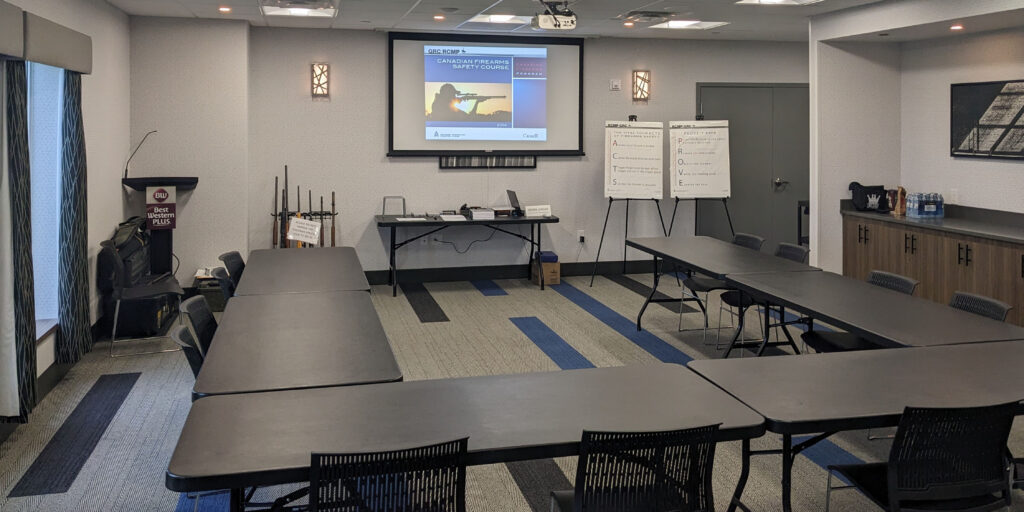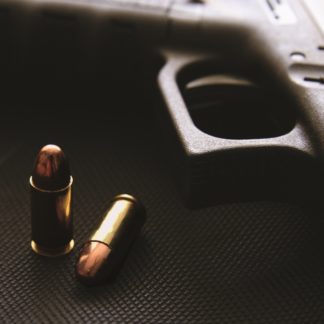
Thank you for your interest in the Canadian Firearms Safety Course/Canadian Restricted Firearms Safety Course! Get your PAL – possession and acquisition license – (formerly known as FAC) to be able to purchase and own non-restricted and restricted firearms and ammunition.
The courses focus on safe handling and use of all firearms that are available to civilians in Canada. I am a certified firearms instructor and I am very passionate about teaching safe and informative courses or future firearms owners and users.
Upcoming PAL courses
click on the image for more information or if you already made up your mind, hit “ADD TO CART” to secure your spot!
Classes of firearms
All firearms in Canada fall into one of three classes – non-restricted, restricted or prohibited.
Non-restricted firearm: any rifle or shotgun that is neither restricted nor prohibited. Most common long guns are non-restricted, but there are exceptions.
Restricted firearm means:
- a handgun that is not a prohibited firearm,
- a firearm that
- is not a prohibited firearm,
- has a barrel less than 470 mm in length, and
- is capable of discharging centre-fire ammunition in a semi-automatic manner,
- a firearm that is designed or adapted to be fired when reduced to a length of less than 660 mm by folding, telescoping or otherwise, or
- a firearm of any other kind that is prescribed to be a restricted firearm in the Regulations Prescribing Certain Firearms and other Weapons, Components and Parts of Weapons, Accessories, Cartridge Magazines, Ammunition and Projectiles as Prohibited, Restricted or Non-Restricted.
Prohibited firearm* means:
- a handgun that
- has a barrel equal to or less than 105 mm in length, or
- is designed or adapted to discharge a 25 or 32 calibre cartridge, but does not include any such handgun that is prescribed, where the handgun is for use in international sporting competitions governed by the rules of the International Shooting Union,
- a firearm that is adapted from a rifle or shotgun, whether by sawing, cutting or any other alteration, and that, as so adapted,
- is less than 660 mm in length, or
- is 660 mm or greater in length and has a barrel less than 457 mm in length,
- an automatic firearm, whether or not it has been altered to discharge only one projectile with one pressure of the trigger, or
- any firearm that is prescribed to be a prohibited firearm in the Regulations Prescribing Certain Firearms and other Weapons, Components and Parts of Weapons, Accessories, Cartridge Magazines, Ammunition and Projectiles as Prohibited, Restricted or Non-Restricted.
Firearm Safety-Training Requirements
To reduce the risk of firearm-related accidents and enhance the safety of Canadian homes and communities, it is important that all applicants for a Possession and Acquisition Licence (PAL) or a Minor’s License have an adequate knowledge of firearm laws and safe-handling practices.
Requirements for PAL Applicants
To be eligible to apply for a PAL, classroom participation in the Canadian Firearms Safety Course (CFSC) is mandatory for first-time license applicants. Once the course is completed, individuals will then have to pass the tests. The content of this course is controlled and approved by the Royal Canadian Mounted Police Canadian Firearms Program (CFP), and is delivered in many locations across Canada.
In addition to meeting the requirement set out above, applicants for a PAL to acquire restricted firearms must also have:
- participated in the Canadian Restricted Firearms Safety Course (CRFSC) and passed the tests; or
- obtained alternative certification from a CFO for that class of firearms.
Individuals who passed the CFSC prior to February 1999 are deemed to have passed the CRFSC as well.
Individuals generally need to meet the safety training/knowledge requirements only once.
Exceptions
- The Attorneys General of Manitoba and Quebec designated some provincial hunter-safety courses as equivalent to the CFSC. Individuals who passed one of those courses (before April 1, 1994 in Manitoba and before January 1, 1995 in Quebec) do not need to pass the CFSC.
- A CFO may offer “alternative certification” to an individual if the CFO is satisfied that the individual’s knowledge of firearms laws and safe-handling practices meets the national standards set for licensing.
Note
If a court has prohibited an individual from possessing firearms, the individual must wait until the prohibition order has expired, then take the appropriate firearms safety courses and pass the written and practical tests before applying for a PAL, even if the individual had met the safety-training requirements prior to being prohibited.
Requirements for a Minor’s License
Generally, minors seeking a license to possess non-restricted firearms must take the CFSC and pass the tests.
